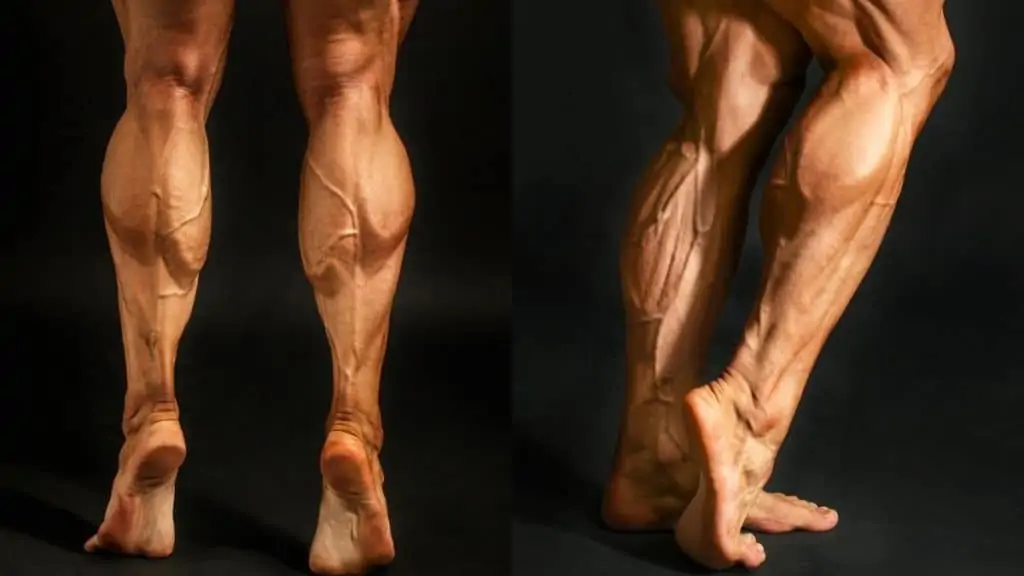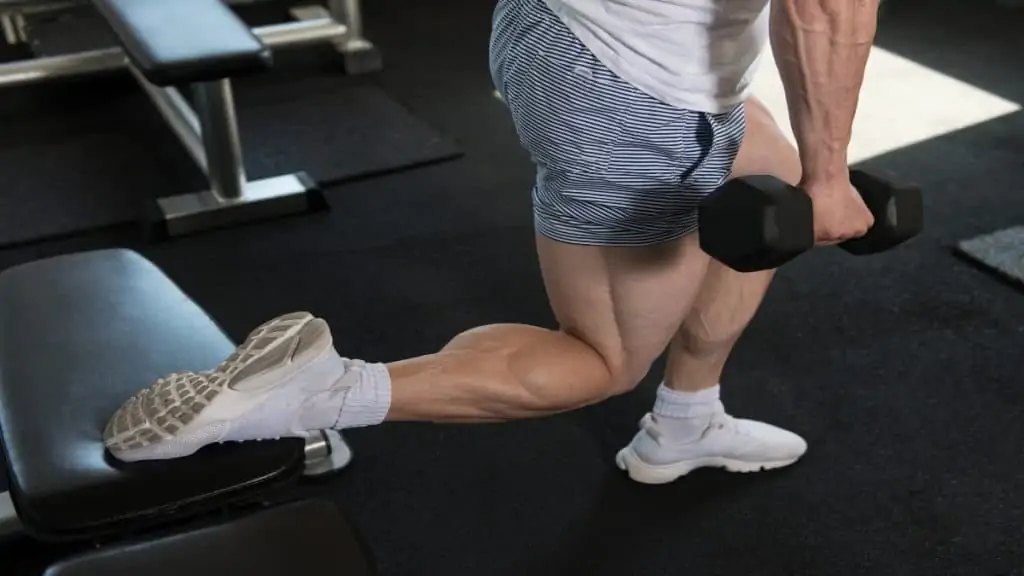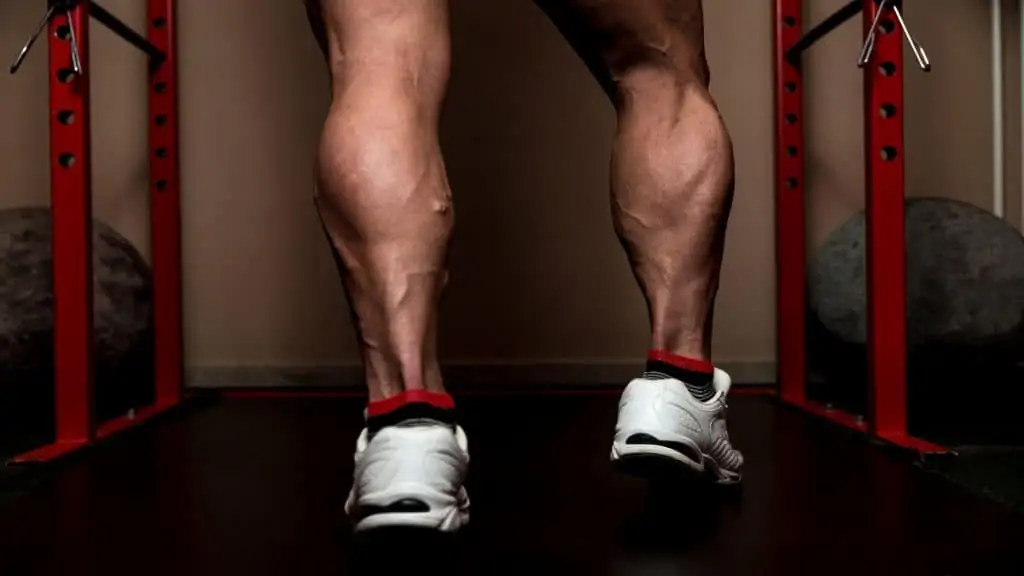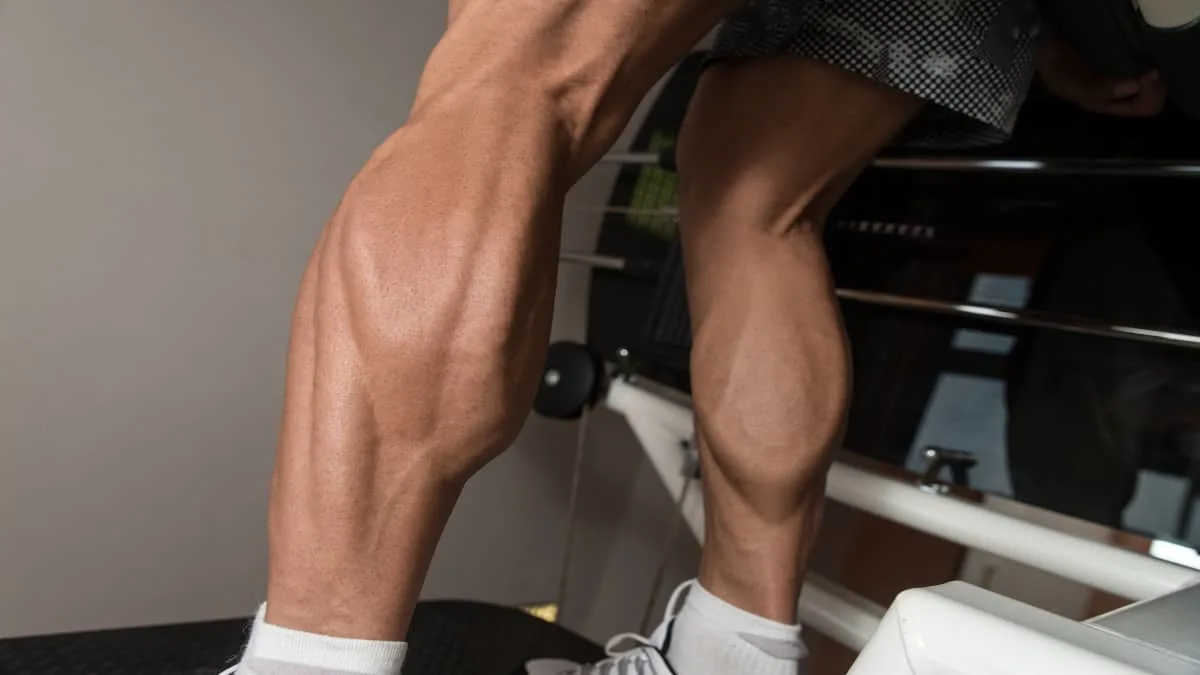Even if you know how to measure your calf in order to get the biggest possible circumference measurement (pumped and flexed), it’s unlikely that you’ll have 19 inch calves.
The reason being is that it takes years of resistance training (or outstanding calf genetics) to get your lower legs to the 19 inch mark.
Additionally, as you’ll soon learn, many serious bodybuilders don’t even have 19″ calves despite trying every training trick and intensity technique in the book. Yeah, the calves are notoriously stubborn.
See How Your Calves Stack Up:
How big are 19 inch calves?

How big are 19 inch calves for a natural lifer?
For a weight lifter or athlete of any kind, a 19 inch calf circumference is big. But for a natural bodybuilder or a recreational gym-goer, 19 inch calves and 19.5 inch calves are truly colossal.
Seriously, the average lifter could train their calves twice a week for 10 years while eating in a calorie surplus and still not get 19 in calves. That’s how awe-inspiring 19 inch calves are.
Of course, the lower your body fat level, the more defined and muscular your 19″ calves will look. [1]
In this regard, it’s much better to have slightly smaller calves if that means them being much more defined (lean muscles tend to look bigger than muscles covered in fat even if they’re not actually bigger in terms of measurement).
How can you get 19 inch calves?

Have you ever seen a skinny guy with 19 inch calves?
No, me neither.
While it’s possible to have great calves but a lackluster physique in general, this isn’t the case for most people (unless you play a lot of sports or do loads of cycling)
The reality is that building 19 inch calves or a circumference measurement anywhere close to that number requires direct training and a calorie surplus.
Training your calves with weights, which is to say like any other muscle group, is the fastest and best way to get your lower legs growing. This is primarily because resistance training is a much more potent stimulus than simply walking around on your feet.
Additionally, eating in a calorie surplus—while not essential for muscle growth (those cyclists with great calves aren’t all stuffing their faces)—will boost your gym performance and help you to recover faster by providing your body with more energy.
Could you get 19″ calves without training them directly?

While it’s technically possible to build 19 in calves without training them directly, it’s highly unlikely for most people.
First of all, you’d need large ankles because having more bone mass enables you to accumulate a greater amount of muscle tissue.
Second, you’d likely also need to have a high body mass. Bulking up to a higher body weight, whether intentionally or as a result of poor dietary choices, means that your calves have to work harder to support your body weight.
So even though you wouldn’t be training them with weights, you’d still be working your calves with resistance, which is to say, with your own body weight.
Moreover, the calorie surplus, especially if you’re eating plenty of protein, would help to fuel calf hypertrophy by giving your calves the nutrients they need to grow. [2]
This is one reason why you see a fair few overweight individuals with good calves.
Conclusion: How impressive is a 19 inch calf circumference?

A 19 inch calf circumference is very impressive in the sense that few people will get calves that big.
However, if having 19 inch calves puts your health in jeopardy, then you should seek to slim down your lower legs and likely the rest of your body as well.
Of course, having physique goals is important for many people because goals help you to stay motivated, which helps you to work out consistently. And after all, even if you don’t have the genetics to get 19 or 19.5 inch calves, you can still build slightly smaller calves that look great.
It’s a good idea to set ambitious calf goals because they’re a stubborn muscle group to grow. So if despite your hard work, you fail to get 19 inch calves, then you’ll likely still end up with much better calves than if you’d given up on training them completely.
References
- Chesak, J. (2019, January 9). The No BS Guide to Building Lean Muscle. Healthline. https://www.healthline.com/health/fitness-exercise/how-to-build-lean-muscle#7-body-sculpting-and-health-benefits
- Klemm, S., RDN, CD, LDN. (2021, January 21). 4 Keys to Strength Building and Muscle Mass. Eat Right. https://www.eatright.org/fitness/training-and-recovery/building-muscle/strength-building-and-muscle-mass

